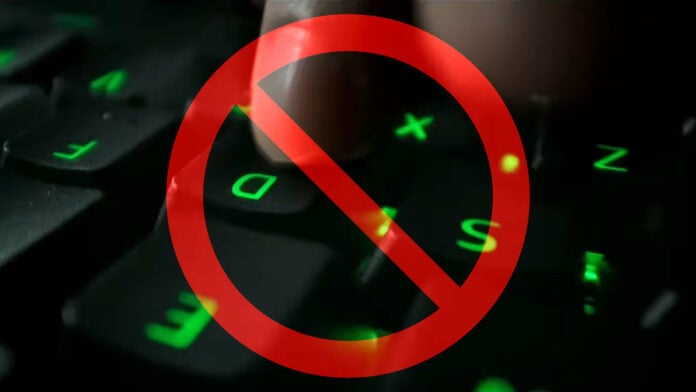The rise in automated features like Razer’s new Snap Tap Mode has proven contentious in competitive shooters as of late, with some claiming it offers an unfair advantage. Valve agrees and has now taken an official stance against them in CS2.
An evolution of Huntsman V3 Pro’s rapid trigger, Snap Tap Mode is Razer’s proprietary feature that promotes non-overlapping movement. Usually, a keyboard needs to finish registering an input before accepting a new one, but Snap Tap immediately prioritises the latest press. This means you can switch direction instantly when strafing from A to D to A again.
Wooting quickly followed with an update to its Hall Effect keyboards, dubbing a similar feature SOCD. It works slightly differently but with the same outcome. No other brand has revealed plans to join the wave, but it seems like an inevitability at this point.
Pros worldwide flocked to dub the features cheating, referring to them as hardware-based null binds. True to their name, null binds essentially use console commands to disable multiple key inputs for faster reaction times and are banned in competitive play.
It’s particularly egregious in faster-paced games like Overwatch, showcased by former pro Brian St. Pierre, otherwise known as Kephrii. Although it doesn’t look quite as pronounced in CS2 to the untrained eye, pro players such as Robin “ropz” Kool similarly called for it to be banned.
Usually, such advantages aren’t policed in general ranked modes, but Valve has heard cries and is taking action. If detected on your system, you might get booted from your game. In particular, the game calls out Snap Tap Mode, encouraging you to disable the feature before a match to “avoid interruption to your matches.”
“We are no longer going to allow automation (via scripting or hardware) that circumvent these core skills and, moving forward, (and initially exclusively on Valve Official Servers) players suspected of automating multiple player actions from a single game input may be kicked from their match,” explains the company in a statement. “To prevent accidental infractions, in-game binds that include more than one movement and/or attack actions will no longer work (e.g., null-binds and jump-throw binds).”
The reason is that mastering reaction times is a core element in Counter-Strike 2, and these features lower the skill ceiling. As much as that might help me, an average Joe, it harms the delicate systems that are already in place. Looks like Razer might need to remove the CS2 Profile that’s “approved by Valve.” I wouldn’t be surprised to see other games follow Valve’s lead.
I’ve highlighted the rising concerns in hardware advantages myself in recent years. MSI’s AI gaming monitor initially highlighted enemies on-screen at CES, giving you a distinct leg up over your opponent. The latency wasn’t FPS fast, but it certainly benefits MOBA like League of Legends. Valve almost certainly wouldn’t let it fly in Dota 2 when it finally comes to market, nullifying one of its core selling points.
Truthfully, it’s a tough balance, as you don’t want to necessarily stifle progress. At some point, Hall Effect keyboards might become a dime a dozen, and in those instances, developers can build games around the features. Until then, there’s no difference between this and the precision aim button on a G502, and it has no place in competitive play.


